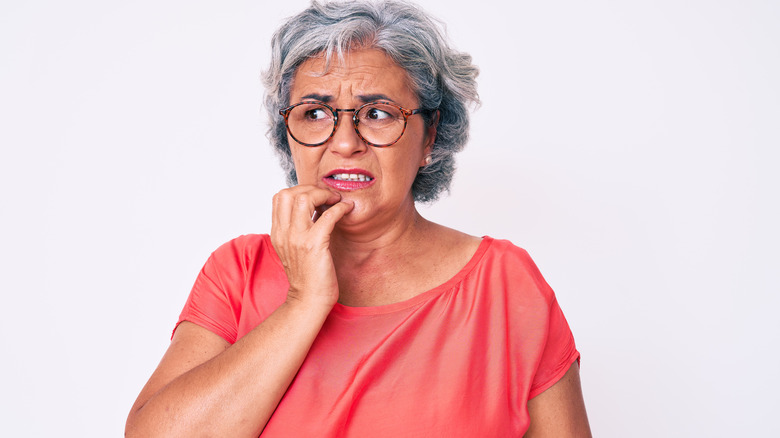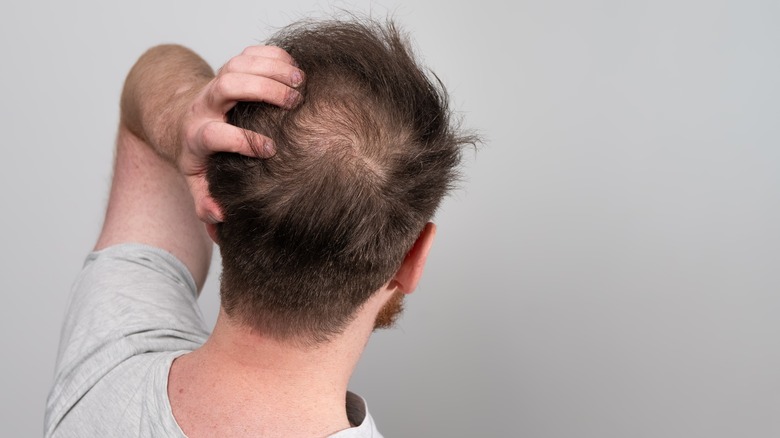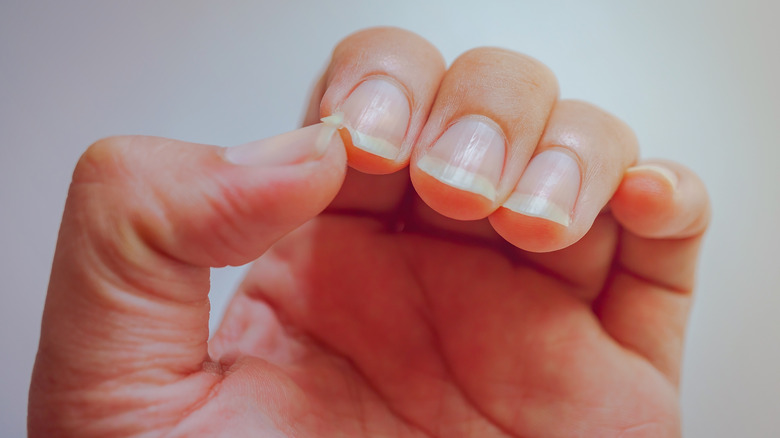How Your Hair And Nails Change As You Age
The effects of aging aren't always welcome. From wrinkly skin to extra pounds, sometimes getting older can feel less than ideal. But if we're lucky enough to age, our bodies will undergo a multitude of natural changes, and some of those even include differences in our hair and nails. So what's normal?
As we age, all the systems in our body go through shifts, says Mayo Clinic. The blood vessels and arteries begin to thicken, making the heart work harder. Bones start to become weaker and their size and density decrease. Muscles become less flexible and start to lose their strength, causing us to lose coordination and balance. Constipation can become more common, and issues emptying the bladder can be present in both men and women. Our vision and hearing might become impaired, the skin loses some of its elasticity, and libido may decrease.
This isn't an exhaustive list, since everyone ages differently. But two things you might notice changing as you get older are your hair and nails.
Hair color and texture changes are normal as we age
One of the biggest ways that hair can change as we get older is in its color, according to MedlinePlus. As we age, our hair follicles begin to produce less melanin, which is what deposits pigment in our hair. With less and less melanin, hair begins to turn gray. While gray hair is typically associated with older age, it's actually normal for a person to begin going gray in their 30s.
As hair follicles change over time, other changes take place, writes Medical News Today. Years of environmental influences can impact the hair, such as being in the sun and treating hair with chemicals. This can weather the hair and create damage. Individual hairs also become thinner, making them weaker and more likely to break, explains MedlinePlus. Hair becomes thinner overall as follicles produce fewer and fewer new hairs. Men can begin experiencing baldness in their thirties, and many go completely bald in their 60s. Women can experience baldness too, as the hair becomes less dense and the scalp can begin to show.
You can prevent damage to your hair by using conditioner, protecting your hair when swimming, focusing on the scalp when washing your hair, and being sure to shampoo oily hair frequently (via Medical News Today).
Weaker nails are to be expected
Fingernails and toenails change as we age, too. They tend to grow more slowly and become dull, notes MedlinePlus. Toenails particularly can become tough and thick, while fingernails may break more easily. Ingrown nails can also become more common as we get older.
The older we get, the less the nail plate bonds to the nail bed, which means it can be harder for our nails to recover from a harsh treatment like a gel manicure or acrylic nails (via Women's Health). The nails also naturally become weaker as we age. This is because the matrix, or the place on the finger where the nail begins to grow, experiences thinning as we age. This can result in onychorrhexis, a condition also known as brittle nail syndrome (per WebMD). Onychorrhexis can cause vertical ridges in the nail, splitting nails, and tears along the edges.
You can take care of your nails as they age by discontinuing treatments and products that contain harsh chemicals, using cuticle cream to hydrate the nails, and buffing out light ridges on the nails, followed by massaging in natural emollient oil, like olive oil (via Women's Health).



